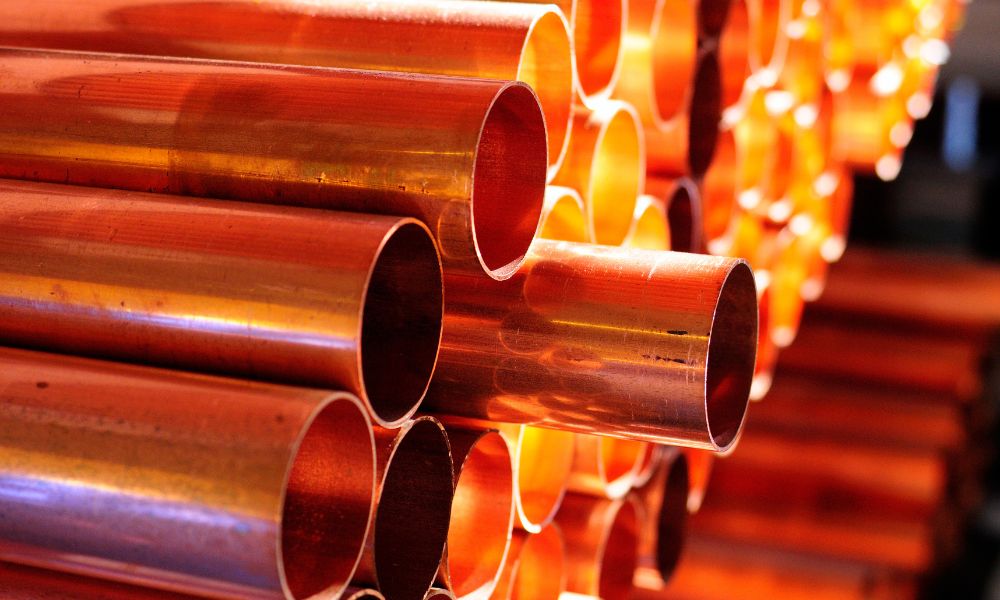










Copper is a beautiful and durable metal, often used in decorative items, cookware, and pipes. However, over time, it can tarnish, losing its shine and luster. If you want to restore your copper's gleam, polishing it is a great way to do so. In this blog, we’ll take you through the process of polishing copper, from simple home remedies to specialized techniques.
Before we dive into the methods, it’s important to understand why copper tarnishes and why regular polishing is necessary. Copper reacts with air, moisture, and certain substances in its environment, leading to oxidation. This results in the familiar greenish patina or darkened surface. While some people enjoy the vintage look of oxidized copper, others prefer the shiny, reddish-orange hue of newly polished copper.
Here’s a quick list of items you’ll need to get started with polishing your copper:
| Item | Purpose |
|---|---|
| Baking Soda | Gentle abrasive for tarnish removal |
| Vinegar or Lemon | Acidic solution to dissolve oxidation |
| Salt | A mild abrasive and cleanser |
| Soft Cloth or Towel | For polishing and buffing the surface |
| Copper Polish | Commercial polish for deep cleaning |
| Gloves (optional) | To protect your hands |

There are several methods for polishing copper, ranging from natural household items to store-bought solutions. Here’s a breakdown of each:
This natural method uses ingredients most people already have at home, and it’s effective for cleaning light to moderate tarnish.
Steps:
Mix 1/4 cup of baking soda with 1/4 cup of vinegar. The mixture will fizz, so prepare for that.
Apply the paste to the copper surface using a soft cloth.
Rub gently in circular motions to remove tarnish.
Wipe off the mixture with a clean cloth and rinse the copper with warm water.
Dry with a soft towel.
This method works well for items like copper cookware or small copper decorations.
If your copper piece has more stubborn tarnish, a lemon and salt mixture can work wonders.
Steps:
Cut a lemon in half and sprinkle salt on the cut side.
Rub the lemon directly onto the tarnished copper, squeezing gently as you go.
The acidity of the lemon combined with the abrasiveness of the salt helps to break down the tarnish.
Rinse the copper with warm water and dry thoroughly.
This method is great for smaller items like copper mugs or jewelry.
For serious tarnish or to restore a brilliant shine, you may want to use a specialized copper polish. These polishes are formulated to work quickly and effectively.
Steps:
Follow the instructions on the polish container.
Generally, you'll apply a small amount of polish to a soft cloth and rub it onto the copper surface in circular motions.
Buff the copper with a clean cloth to bring out its shine.
Commercial copper polishes are especially helpful for larger or heavily tarnished items.

How often you polish copper depends on where it’s located and how much use it gets. If it's something like a kitchen pot, polishing every few months is usually enough to maintain its shine. For decorative items that are on display or exposed to the elements, you might need to polish more frequently. In general, it’s best to give your copper items a quick clean and polish when you notice any dullness or tarnishing.
To prevent tarnishing, you can apply a thin layer of wax or a commercial copper sealant. These products create a barrier that protects the copper from exposure to air and moisture. Regular cleaning and careful storage can also help prolong the shine.
It’s best to use a polish specifically designed for copper. Other metal polishes may contain abrasives that could scratch the soft copper surface, leading to permanent damage. Copper-specific polishes are formulated to preserve the metal’s unique properties.
If the patina is particularly thick, you may need to use a stronger acid like hydrochloric acid or a commercial tarnish remover. However, these substances should be handled with care and only used in well-ventilated areas. For highly collectible or antique copper items, consider consulting a professional for restoration.
If you prefer the green patina (also called verdigris) on copper, avoid polishing the item too frequently. You can encourage the patina by exposing copper to the elements, such as rain or humidity. If you want to accelerate the process, some people use a mixture of vinegar and salt and allow the copper to naturally oxidize.
Yes, you can use these methods on most copper items, but be cautious with antiques or copper-coated items. For antiques, it’s always best to test a small area first, as aggressive polishing might damage the item or reduce its value.
Polishing copper not only helps restore its shiny look but also ensures the longevity of your items. Whether you choose a natural approach with baking soda and vinegar or opt for a professional polish, keeping your copper gleaming doesn’t have to be a difficult task.






